Vallejo, CA Pollen and Allergy Report for Summer 2023
Pollen Allergy Trends in Vallejo, CA
When is pollen lowest in Vallejo, CA?

February
Lowest month total PPM
Avg. PPM
When is pollen highest in Vallejo, CA?

May
Highest month total PPM
Avg. PPM
How does pollen in Vallejo, CA compare to California?
Vallejo has a lower average PPM than the state of California.
Vallejo yearly avg PPM:
California yearly avg PPM:
How does pollen in Vallejo, CA compare to the USA?
Vallejo has a lower average PPM than the USA.
Vallejo yearly avg PPM:
USA yearly avg PPM:
Is pollen worse this year in Vallejo, CA?
Spring 2023 was worse than spring 2022.
Spring 2023 PPM:
Spring 2022 PPM:
Average PPM in Vallejo, CA
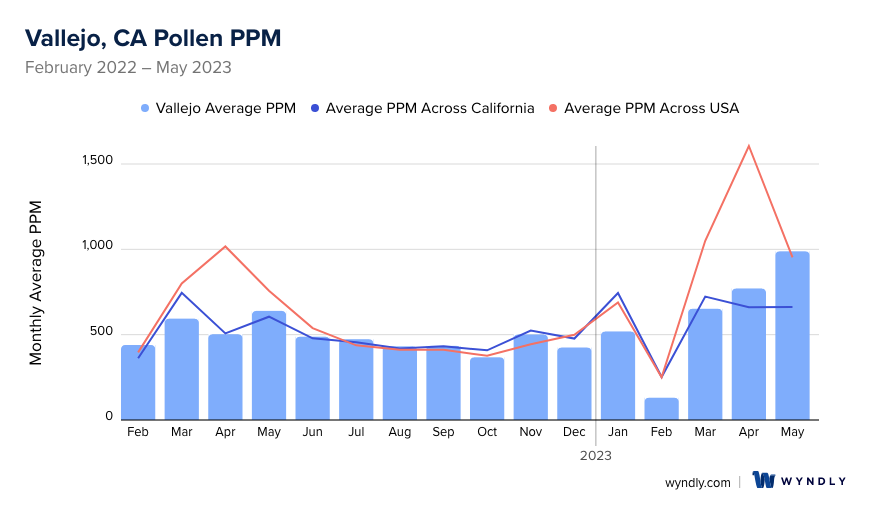
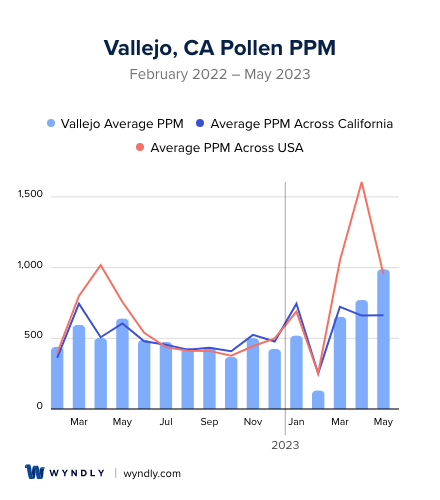
Vallejo, CA Pollen and Allergy Breakdown by Month
Grass
When is grass pollen highest in Vallejo, CA?
May has the highest grass pollen in Vallejo, CA with an average PPM of
When is grass pollen lowest in Vallejo, CA?
December has the lowest grass pollen in Vallejo, CA with an average PPM of
Tree
When is tree pollen highest in Vallejo, CA?
May has the highest tree pollen in Vallejo, CA with an average PPM of
When is tree pollen lowest in Vallejo, CA?
August has the lowest tree pollen in Vallejo, CA with an average PPM of
Weed
When is weed pollen highest in Vallejo, CA?
November has the highest weed pollen in Vallejo, CA with an average PPM of
When is weed pollen lowest in Vallejo, CA?
February has the lowest weed pollen in Vallejo, CA with an average PPM of
Vallejo, CA Pollen Monthly Breakdown by Pollen Type

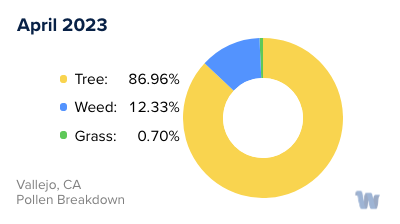
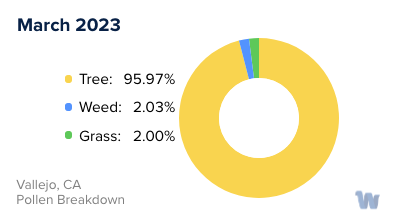
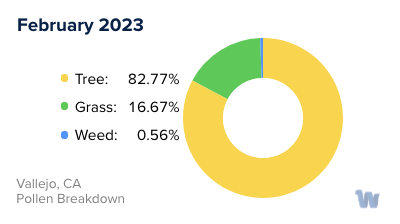
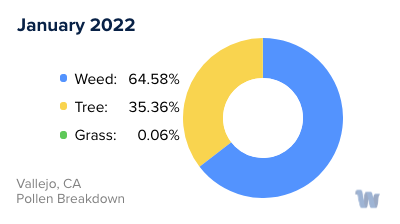
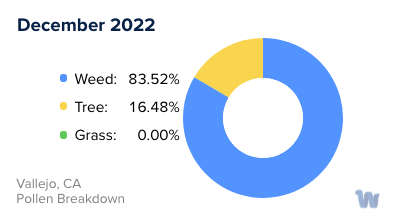

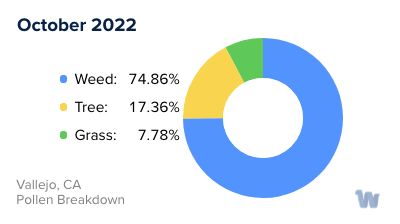
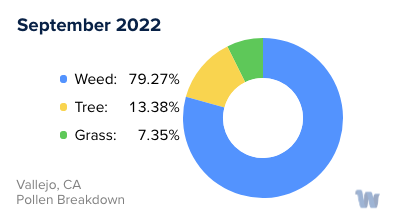
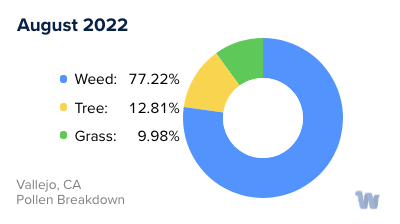

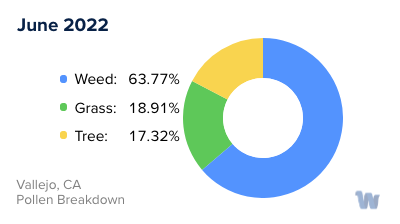
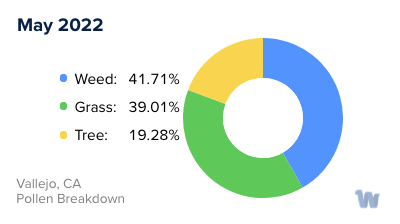
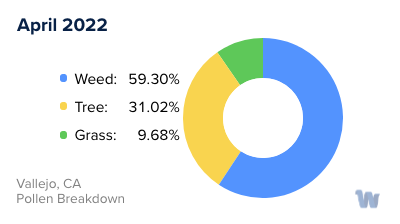
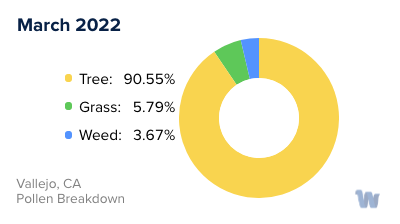
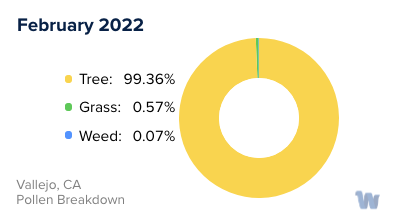
Pollen and Hay Fever in Vallejo, CA
In the scenic city of Vallejo, California, residents and visitors alike often find themselves enchanted by the area's natural beauty. However, for some, the changing seasons can bring an unexpected challenge: pollen allergies, also known as hay fever. This condition occurs when the immune system reacts to pollen from trees, grasses, and weeds, mistaking these tiny particles for harmful invaders.
Spring in Vallejo is a particularly active time for tree pollen. As the trees begin to blossom, they release pollen into the air. Oak, pine, and cedar are among the types of trees that are prevalent in Vallejo, and their pollen can be especially bothersome for allergy sufferers.
As the calendar turns to summer, the focus shifts from tree pollen to grass pollen. Bermuda, Timothy, and Kentucky bluegrass are common in the region. These grasses release their pollen into the air during the warm summer months, which can lead to sneezing, itchy eyes, and other hay fever symptoms for those who are sensitive.
When fall arrives, weed pollen takes center stage. The windswept hills and fields around Vallejo are home to various weeds, including ragweed, sagebrush, and tumbleweed. These weeds release large amounts of pollen, and for some people, this can be the most challenging time of year for allergies.
In contrast, winter usually provides relief as the pollen levels drop significantly. The colder temperatures and rains help to clear the air of pollen.
Being aware of the types of pollen and the seasons in which they are most prevalent can be invaluable for residents of Vallejo, California. Knowledge is power, and understanding the cycle of pollen throughout the year can help individuals prepare and make informed decisions about their outdoor activities.

